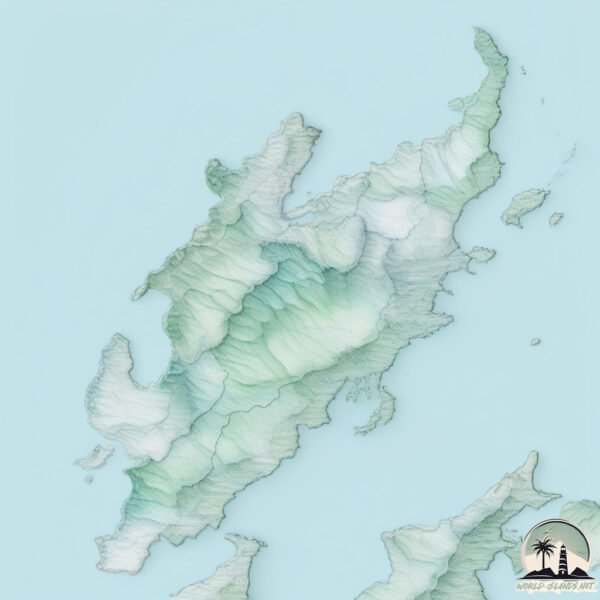Welcome to D’Urville , a Temperate island in the Tasman Sea, part of the majestic Pacific Ocean. This guide offers a comprehensive overview of what makes D’Urville unique – from its geography and climate to its population, infrastructure, and beyond. Dive into the details:
Geography and size of D’Urville
Size: 169.8 km²Coastline: 260.5 kmOcean: Pacific OceanSea: Tasman SeaContinent: Oceania
D’Urville is a Large Island spanning 170 km² with a coastline of 261 km.
Archipel: Polynesia – A region of more than 1,000 islands in the central and southern Pacific Ocean, known for their diverse Polynesian cultures, stunning landscapes, and marine biodiversity.
Tectonic Plate: Australia – A major tectonic plate covering Australia, New Zealand, and parts of the Indian and Pacific Oceans, known for its relative stability and occasional seismic activity.
The geographic heart of the island is pinpointed at these coordinates:
Climate and weather of D’Urville
Climate Zone: TemperateClimate Details: Temperate Oceanic ClimateTemperature: Warm Summer
Climate Characteristics: Known for its moderate year-round temperatures with ample rainfall and no dry season. Warm summers are characteristic.
Topography and nature of D’Urville
Timezone: UTC+12:00Timezone places: Pacific/AucklandMax. Elevation: 573 m Mean Elevation: 191 mVegetation: Evergreen Needleleaf ForestTree Coverage: 92%
The mean elevation is 191 m. The highest elevation on the island reaches approximately 573 meters above sea level. The island is characterized by Plateau: Elevated flatlands rising sharply above the surrounding area, with a maximum elevation over 500 meters but a mean elevation less than 300 meters, forming unique highland areas on islands.
Dominating Vegetation: Evergreen Needleleaf Forest
Vegetation: 7 vegetation zones – Very Highly Diverse Island
Infrastructure and Travelling to D’Urville
Does the island have a public airport? no .
Does the island have a major port? no .
The mean population of D’Urville is 0 per km². D’Urville is Uninhabited. The island belongs to New Zealand .
The name of the island resonates across different cultures and languages. Here is how it is known around the world: Arabic: الجزيرة الجنوبية; German: Südinsel; Spanish: Isla Sur; French: Île du Sud; Portuguese: Ilha Sul; Russian: Южный остров; Chinese: 南島
Continuing your journey, Arapawa is the next notable island, situated merely km away.
Is there ANYTHING this place doesn't have?? S8 EP6 D'Urville Island Part 1
The crew are off on their annual South Island Adventure to the legendary D'Urville Island. The place lives up to the hype and the ...
Is there ANYTHING this place doesn't have?? S8 EP6 D'Urville Island Part 1
The crew are off on their annual South Island Adventure to the ...
The crew are off on their annual South Island Adventure to the legendary D'Urville Island. The place lives up to the hype and the ...
Epic Fishing Trip (4 days fishing & hunting adventure) S8 EP7 D'Urville Island Part 2
Continuing on from last times adventures on D'Urville Island, Scott, ...
Continuing on from last times adventures on D'Urville Island, Scott, Mig and the crew get amongst all the Marlborough sounds ...
Overnight D'Urville Island Adventure
With a good weather window over the next couple of days we decided to ...
With a good weather window over the next couple of days we decided to load up the Stabicraft with all the fishing gear and steam ...
New Zealand is classified as Developed region: G7: Group of Seven – Major advanced economies, including Canada, France, Germany, Italy, Japan, the United Kingdom, and the United States. The level of income is High income: OECD.
News – Latest Updates and Headlines from D’Urville
Stay informed with the most recent news and important headlines from D’Urville. Here’s a roundup of the latest developments.
Loading...
Please note: The data used here has been primarily extracted from satellite readings. Deviations from exact values may occur, particularly regarding the height of elevations and population density. Land area and coastline measurements refer to average values at mean high tide.

